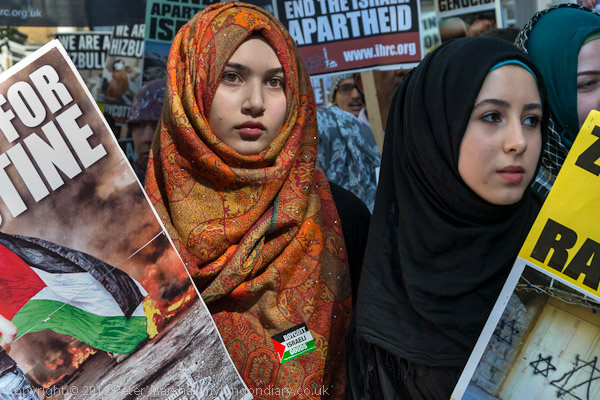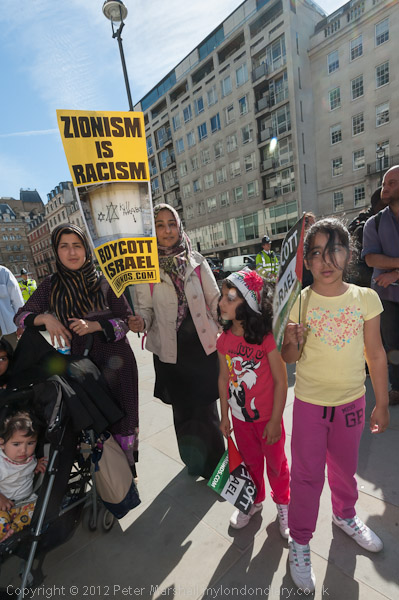Quds is Jerusalem, and the day was inaugurated by Ayotollah Khomeini in the year of the Iranian Islamic Revolution, 1979, but in 1980 received the backing of the Jerusalem Committee of the Organisation of Islamic Cooperation, representing Muslim states around the world (including some officially secular Muslim states.) It has been celebrated in the UK with a march in London for at least 20 years, possibly longer, and for many years there was little or no controversy surrounding it.

The UK-based organisation that organises it is the IHRC, the Islamic Human Rights Commission, which describes itself as “an independent, not-for-profit, campaign, research and advocacy organization based in London, UK.” The IHRC has been criticising human rights abuses against Muslims in non-Islamic countries but largely failing to do so in countries such as Iran, Syria, Libya, or Saudi Arabia, although it has submitted reports to the UN on Iraq, China, Egypt, Saudi Arabia, France, Sri Lanka, The Philippines, Tunisia, Morocco, India, Bahrain, United Kingdom. It is also alleged to receive funding from the Iranian regime.
Criticism of the IHRC in the right-wing press has increased after it organised a number of international conferences, including those on Liberation Theology in Palestine, Human Rights and Israel at 60, and one involving leading Jewish anti-Zionists, as well as supporting various sanctions and boycotts against Israel. As well as attacks by leading supporters of of the Israeli state, its critics also include Iranian Royalists and the democratic Iranian Green movement.
In previous years I’ve had some minor problems in photographing the event, sometimes having arguments with stewards to remain close to those taking part. One year when I was photographing Yvonne Ridley in the march I had to ask her to support me being there – I’d photographed her at many previous events – and last year I was supported by people in the organisation who knew me to remain when most other photographers were being kept away. Last year there had been protests against the march by both the Iranian Greens and the EDL, and in the previous year there were also Iranian Communists, Iranian Royalists, a Jewish group and March For England all making their protest.
This year the whole atmosphere was far more relaxed, perhaps because there were no signs of any of the counter-demonstrations of previous years at any point on the march. I didn’t see the incident, but I later heard that one pro-Israeli blogger had been discovered videoing the speeches at the rally and the stewards had insisted he leave. I think that was unfortunate – there is really no reason to restrict the recording of such events even by those who oppose them.
I think some of my best pictures from the event came from working with the 10.5mm from in the middle of the crowded march. The curvy perspective of the images often helps by emphasizing the centre of the image, which seems to come out of the page at you.


In the upper image of this pair, the uncorrected full-frame fisheye has the effect of wrapping around the image and drawing you in to the centre. When I correct this – as in the lower image – because the lens, held up high above my head was pointing down into the crowd, the buildings around and the placards have a strong divergence, taking the eye away from the centre.
It would be possible to correct this divergence – a simple job in Lightroom, but doing so would lose more of the image, as well a lowering the quality in some areas. But I think it really doesn’t look particularly odd and it improves the image.
I saw the possibility of this picture when I was a few yards away and had to push through the crowd calling out “Excuse me, excuse me” to take it. Fortunately I had switched the 18-105mm for the 10.5 mm just before and was looking for opportunities inside the fairly dense crowd just before the march started. It was something that lasted only a few seconds and I had to rush to grab it. Of course I could have asked the woman to repeat it, but I don’t like to set such things up. It doesn’t work and it is an intervention which I think is unacceptable in photographing news.

Rectilinear perspective can often I think be slightly more disturbing in pictures with an extreme wide-angle – such as the wide end of the 16-35mm. I couldn’t get further away as they were in a crowd and other people were close behind – and had I been able to stand further away, others would have come in to fill the gap – or I would have had to direct the scene, which would have changed it completely.
Working into the sun I’ve got a little flare in a couple of places, unfortunately in both girls’ faces, though hardly visible in the one at the right, as well as on the buildings in the background. While it might have been nicer to avoid it, I don’t find it particularly disturbing, perhaps because the shadows at the bottm make it clear that the sun is shining directly at me. I didn’t have time to try a few pictures using my left hand held resting on the end of the lens, using it as a flexible and positionable lens hood as I often do.
Of course both in this image and the one at the top of the page I had to work with Lightroom to get the shadow detail in the people, and particularly in their faces, increasing both exposure and contrast in the shadow areas.
As usual, more pictures on My London Diary – at Al Quds Day March.
________________________________________________________
My London Diary : Buildings of London : River Lea/Lee Valley : London’s Industrial Heritage
All photographs on this and my other sites, unless otherwise stated are by Peter Marshall and are available for reproduction or can be bought as prints.
To order prints or reproduce images
________________________________________________________